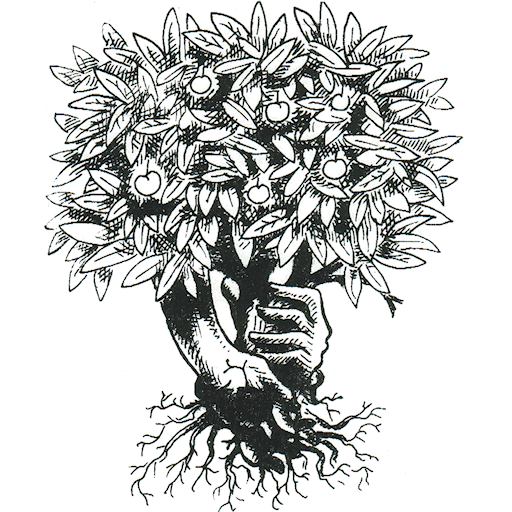Why we need to do something: community hubs?
This is a really useful, thought-provoking book, whose core idea is that every local community should have a Lifehouse: a form of community hub to provide mutual care and practical resources, as normal services increasingly fail us.
His inspiration for this idea comes from a range of emergency response projects described in the book: some short-term like Occupy Sandy in New York, others lasting several years, in Greece and Rojava.

I fully share Greenfield’s view that local communities are the best focal point to raise adaptation capacity quickly: this is the aim of the Community Climate Resilience Project which I’m involved with through Network for Social Change. His Lifehouse concept is certainly worth exploring, so here’s the gist of it:
- A physical place serving a neighbourhood, which could be a repurposed shop, school, church, etc.
- The local focal point for providing and organising mutual care: see more below.
- With a secure backup power source to recharge phones, operate medical equipment, refrigerate food. Power failures are more likely in future due to storms and grid overload.
- Cooking and storage capacity for communal catering when there are food shortages (increasingly likely, see my blog here).
- A socialising and sleeping space if an emergency displaces people from their homes.
- Capacity to repair and maintain basic tools and equipment.
- A store of drinkable water.
- Capacity to grow some food (e.g. vertical farming?).
Lifehouses or community hubs?
I agree that every local community needs the kind of facilities he’s listed, but I really question the idea of trying to get them all in one building. Probably many communities already have some of these items, but across several locations.
The finessed vision I suggest is for an umbrella organisation coordinating a number of elements to form a community hub, using and upgrading existing locations where possible. More specifically:
- A smallish central space could be the access point to all services and mutual care.
- Parish halls and similar could be quite easily upgraded with a backup power supply, larger-scale catering capacity, and emergency food supplies. They could provide a social and sleeping space.
- Food growing and processing will often need a larger site, and may be better organised as a dedicated Community Supported Agriculture scheme.
- Repair cafes and sheds could handle maintenance and repair tasks.
One of my major questions about the Lifehouse vision is money. To buy or rent and equip a building for all the roles he describes will need a large amount of money and human effort. These initiatives will usually rely on a handful of overstretched volunteers, and their limited capacity could be better spent on upgrades to existing facilities, on connecting them as a network, and evolving a culture of mutual care.
Rather than the great effort of starting a new organisation from scratch to create a Lifehouse, I’d hope that in many locations, a coming-together of existing organisations, or one taking a lead, could co-ordinate a resilience network and add whatever capabilities it still needed. Climate Action Centres are just one example.
Mutual care
This is an inspiring major theme of the book. In Chapter 1, The Long Emergency, Greenfield highlights how impersonal and demeaning a lot of services have already become, and how public services are certain to degrade and ‘retract’ in future, as demand keeps growing but capacity shrinks. Just think of all the automated phone systems and online hoopla we suffer now, compared to 10 years ago.

Solidarity clinic in Thessaloniki, Greece
His most impressive example of mutual care is the solidarity networks which sprang up across Greece after the massive austerity measures of 2011. By 2020, this provided much of the healthcare for 10% of the Greek population, and for many refugees excluded from the state system because they had no social security number.
Here, and in other examples he documents, the system was ‘horizontal’, free of charge, egalitarian. It recognised that many health problems arose from social issues, and mutual care seeks to address both. In these clinics, the first visit lasts 90 minutes, and is with three staff: a physician, a psychotherapist, and a social worker, who had time to understand and form responses to all aspects of the case.
Whilst this example involves professionals volunteering their skills, most of them involve regular people helping each other, as in emergency responses, and also in the remarkable autonomous region of Rojava in Kurdish Syria.
The Sad Ah But
As with Rebecca Solnit’s book, A Paradise Built in Hell, this book gives an encouraging picture of how empowering, satisfying, and effective it can be for people to do something, in his catchphrase: especially, to do something collectively to nourish your local community.
What is poignant in both books is that none of their examples evolve ahead of a crisis, always in response. My own efforts to raise local resilience in anticipation of problems have also foundered. It seems that even now, almost no one can find the will to take on the major effort and disruptions from normality needed to create this resilience.

Surely we could make community food provision better than this?
I’m reminded of a conversation earlier this year with Professor Tim Lang about preparation for food shortages. I asked him, how do we persuade people to prepare: he replied, sadly, “It’s going to have to get a lot worse before people act.”
However, I continue to hope that a small minority of pioneers will start to create community resilience hubs now, so that we at least have some examples to learn from and share. This is one of the ideas I hope we can explore in the new Community Climate Resilience Project I’m involved with.
